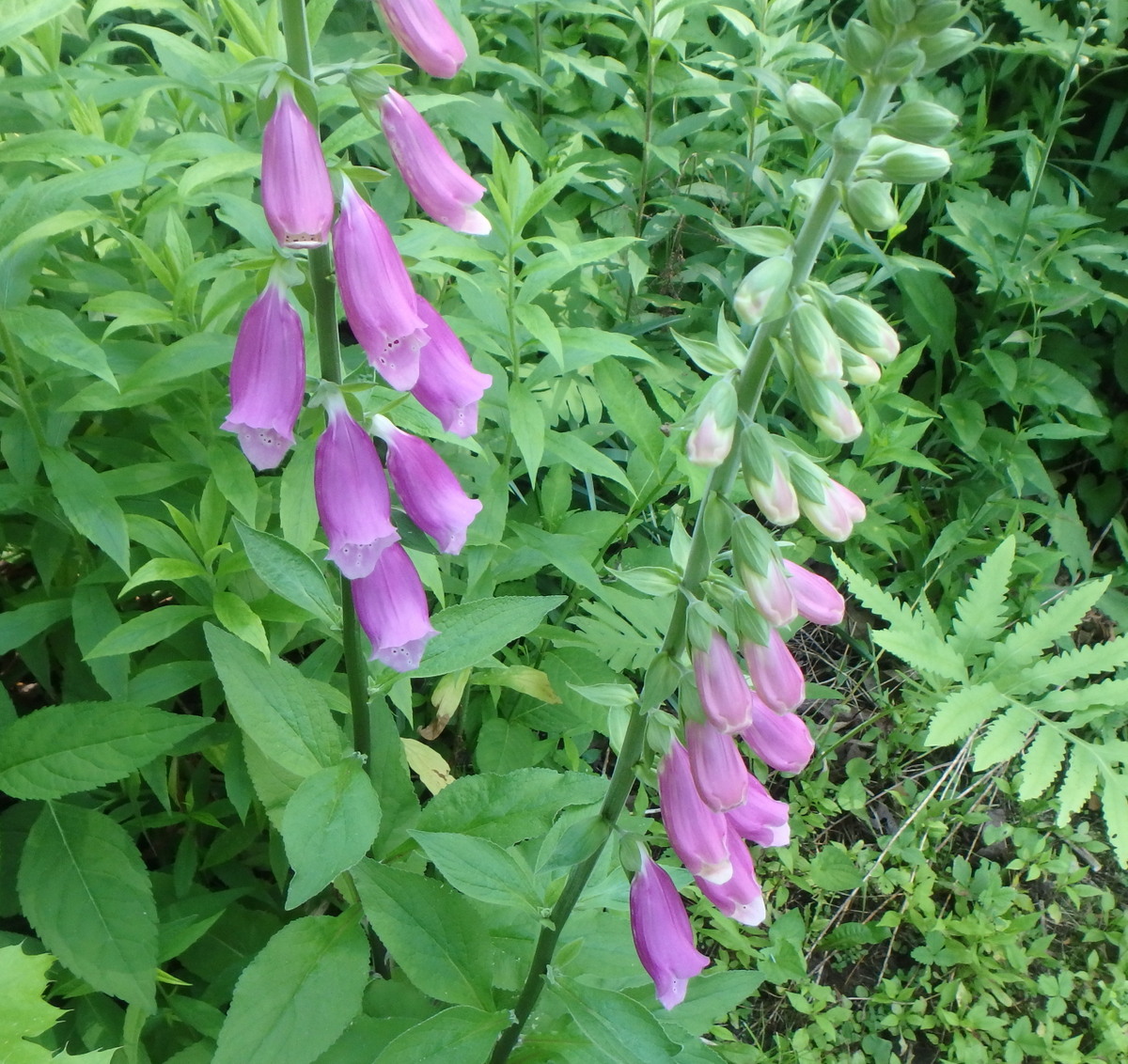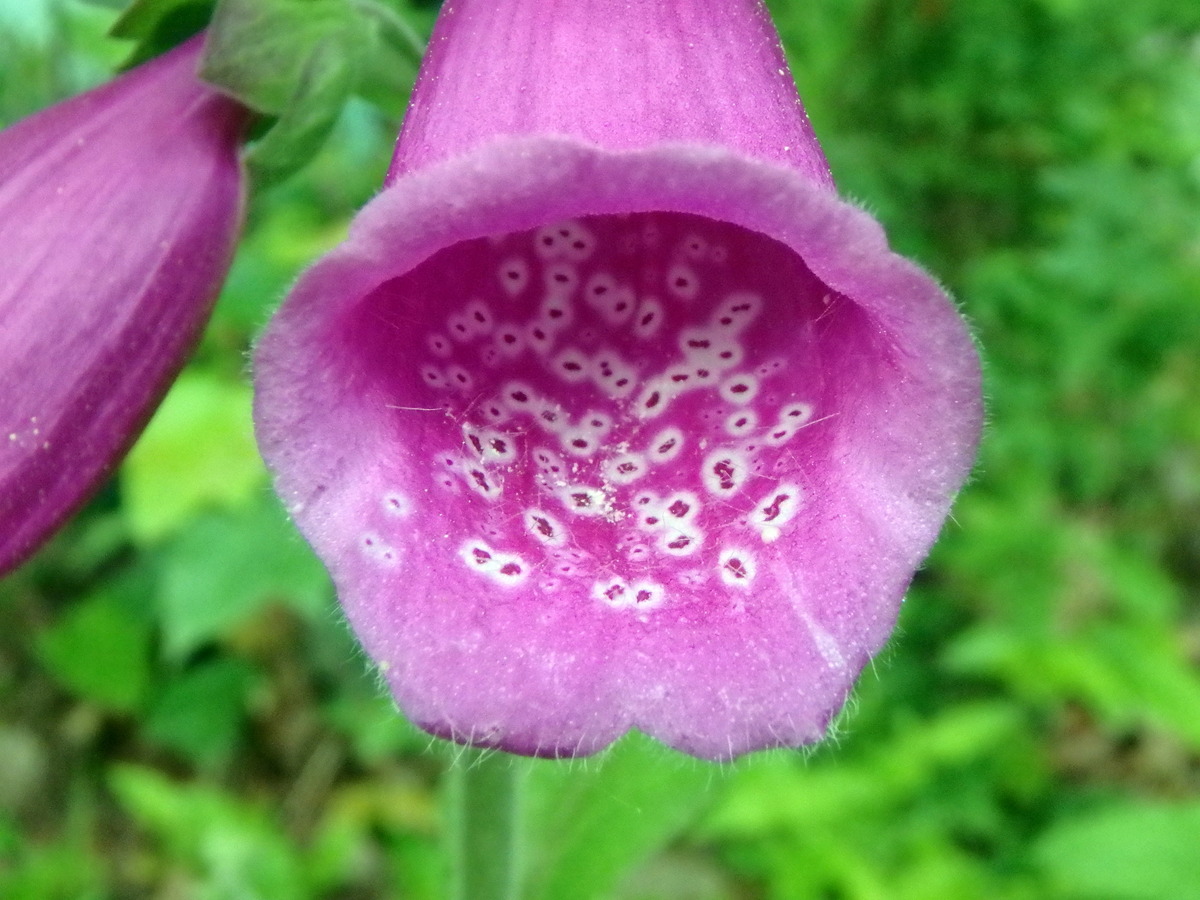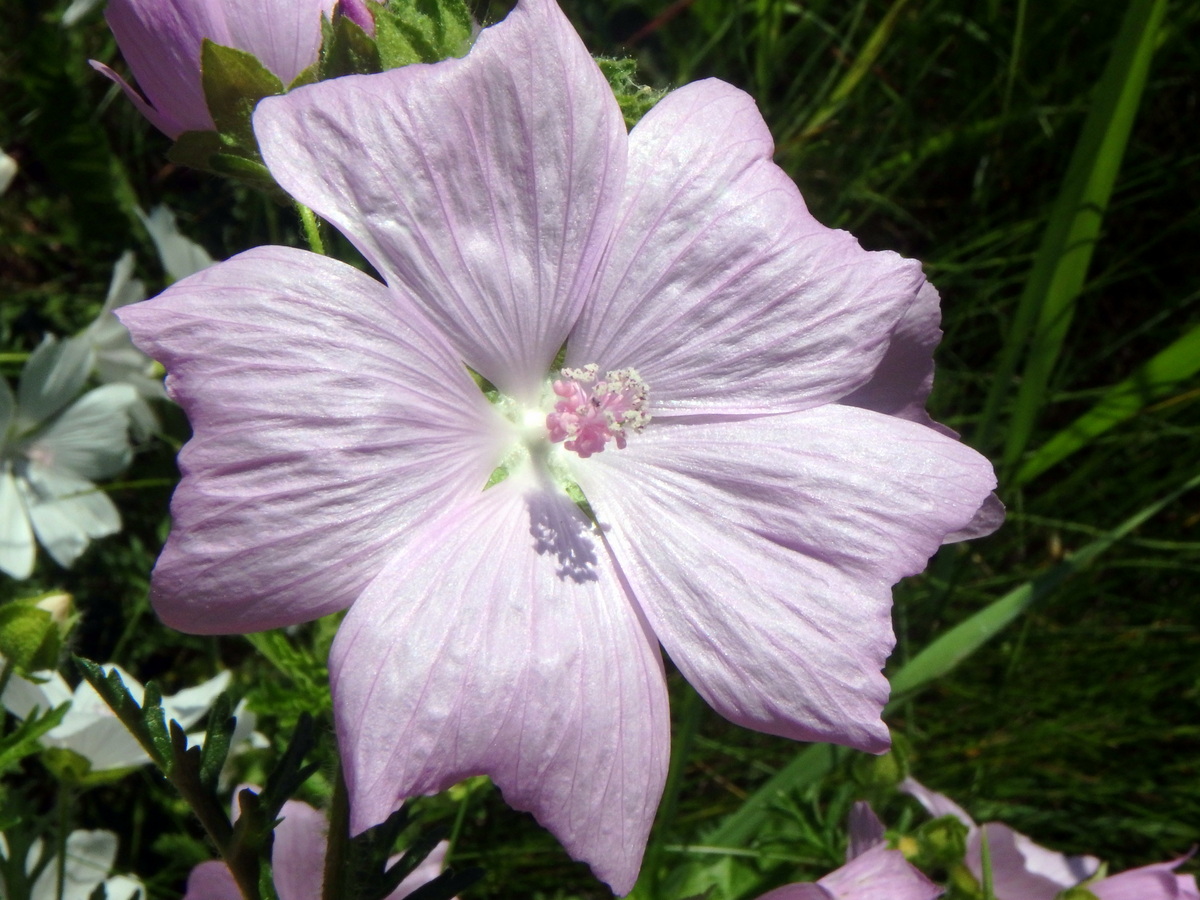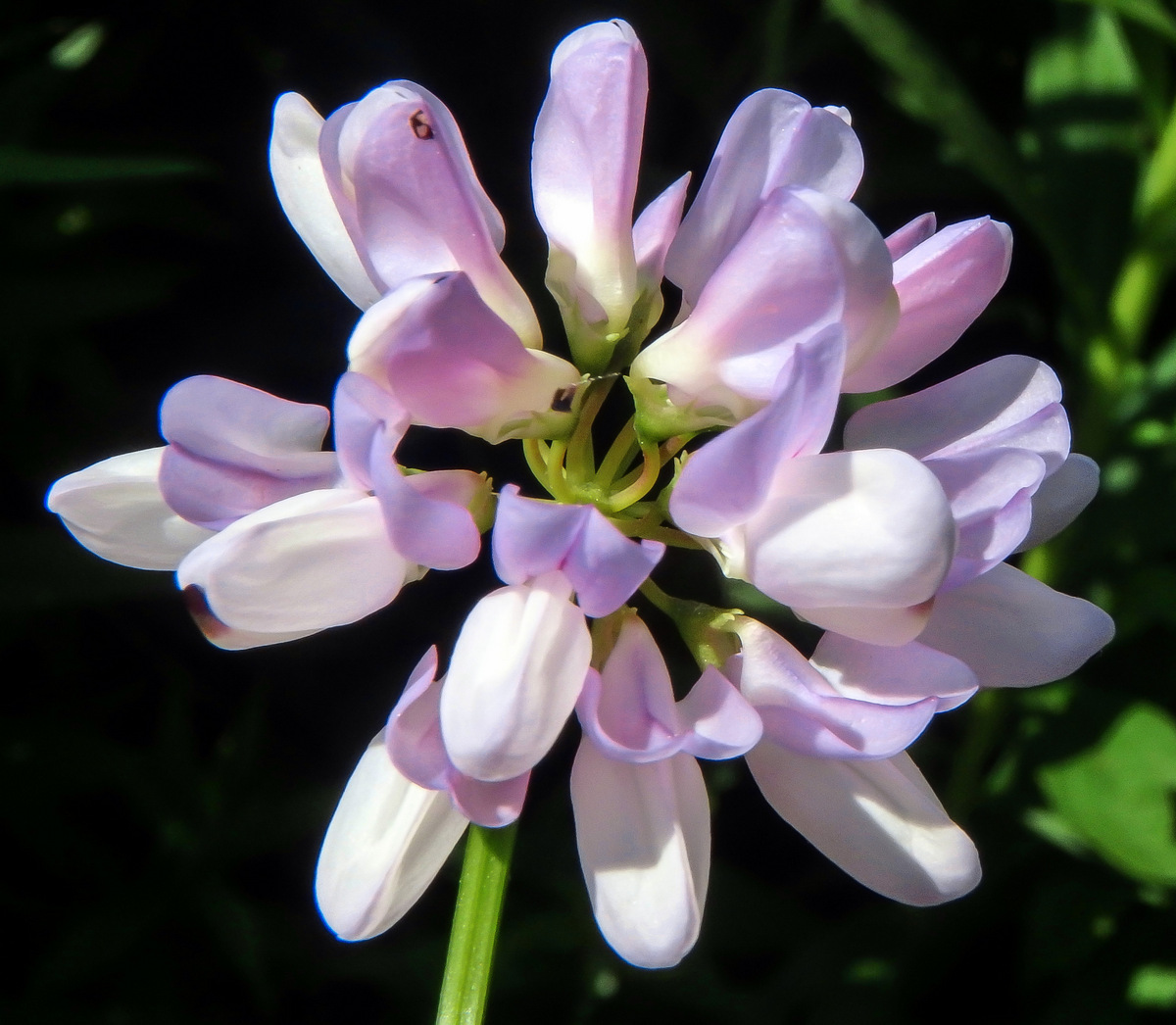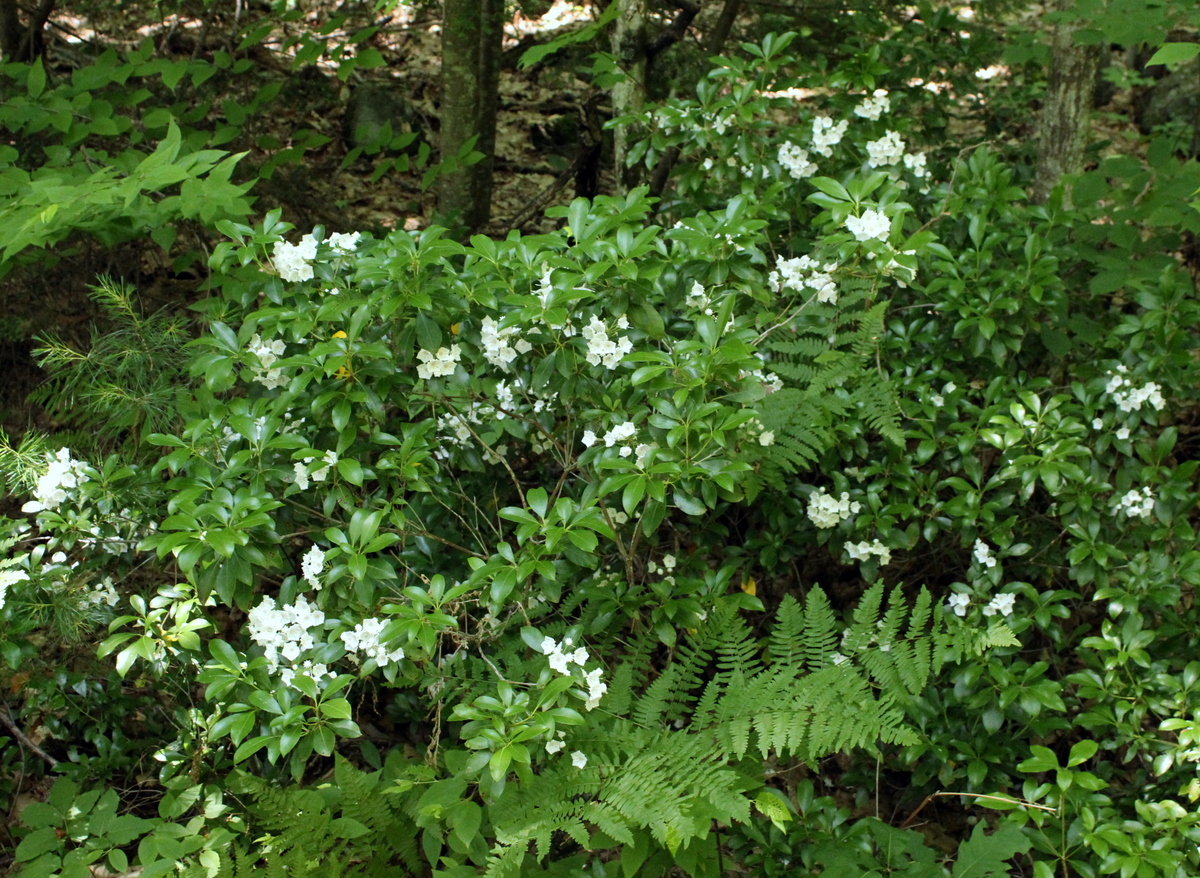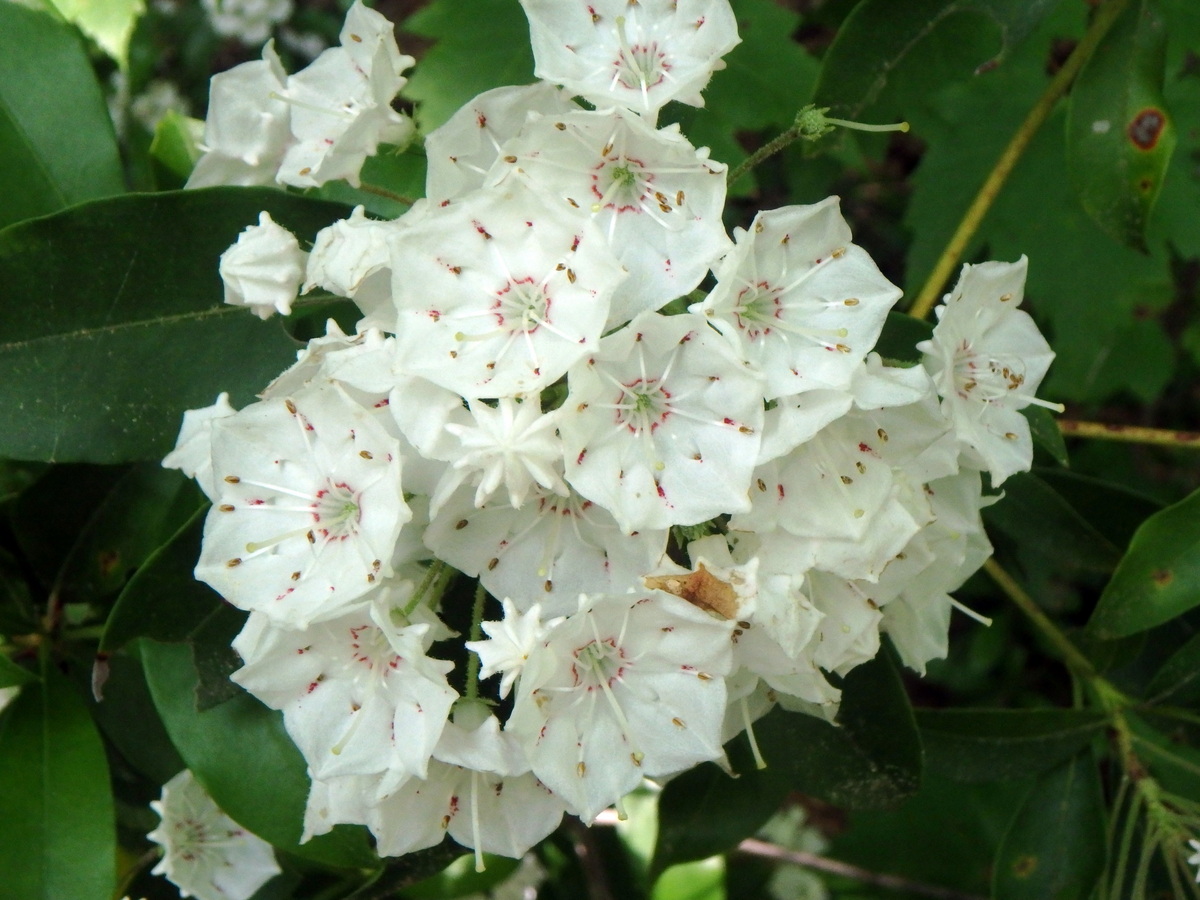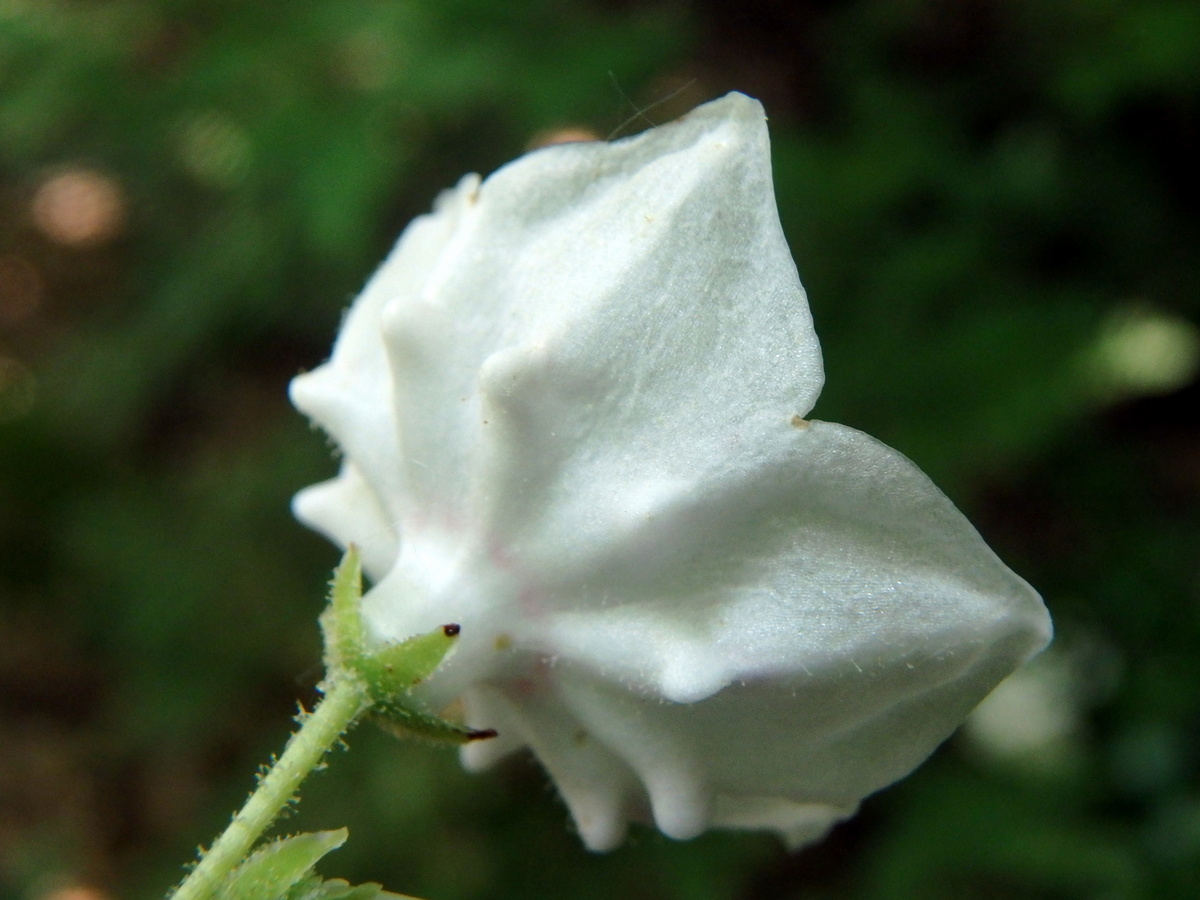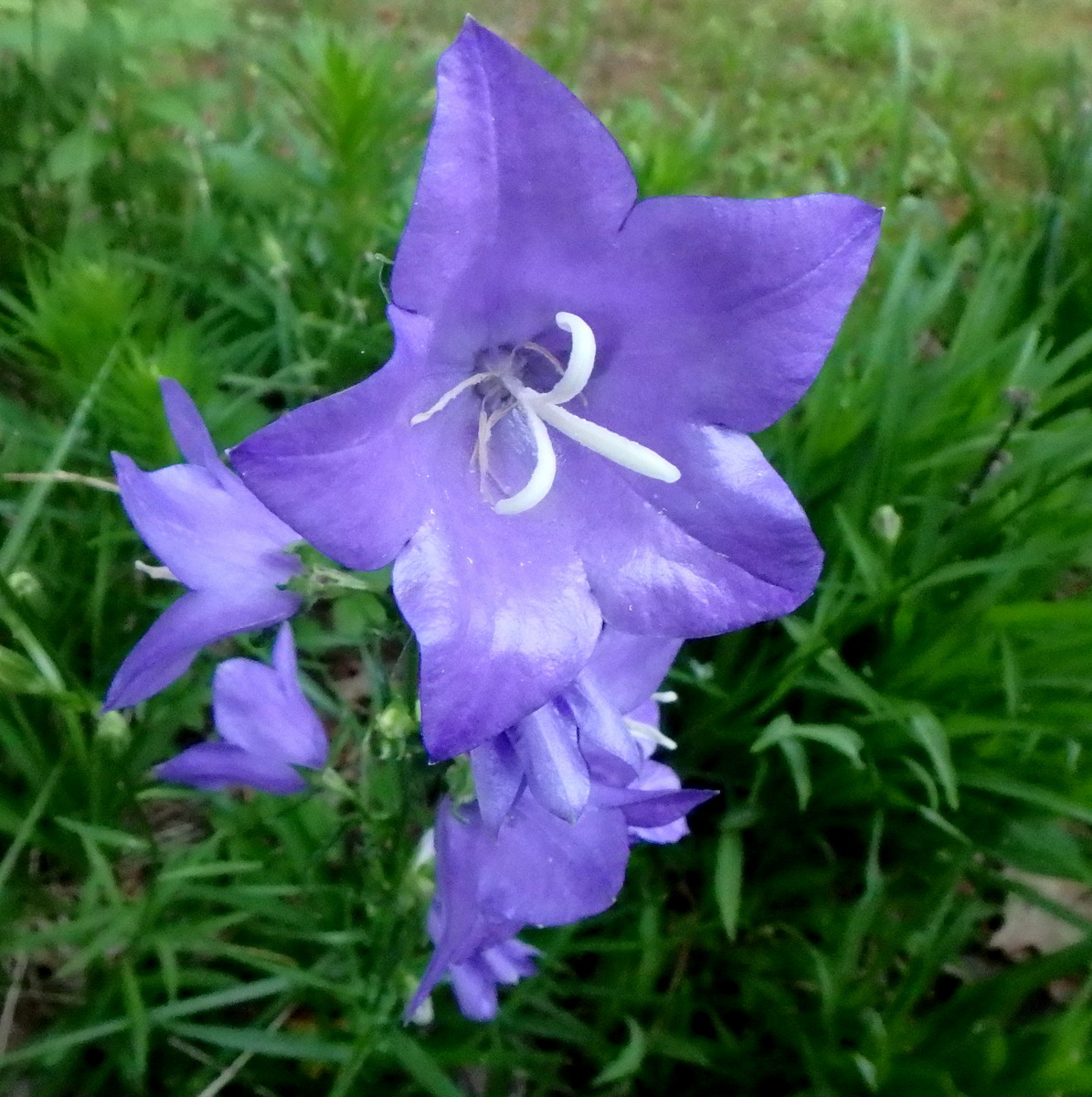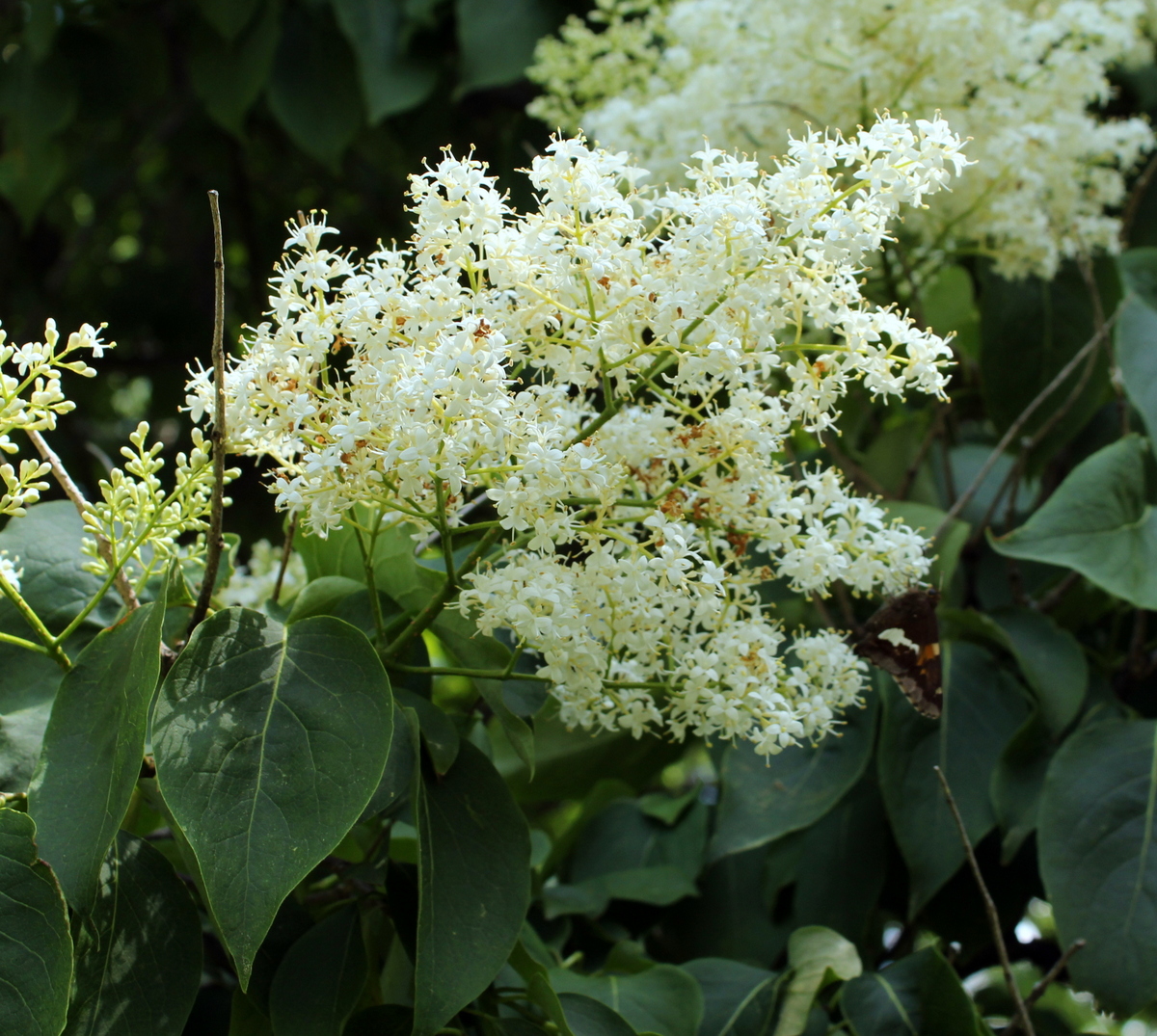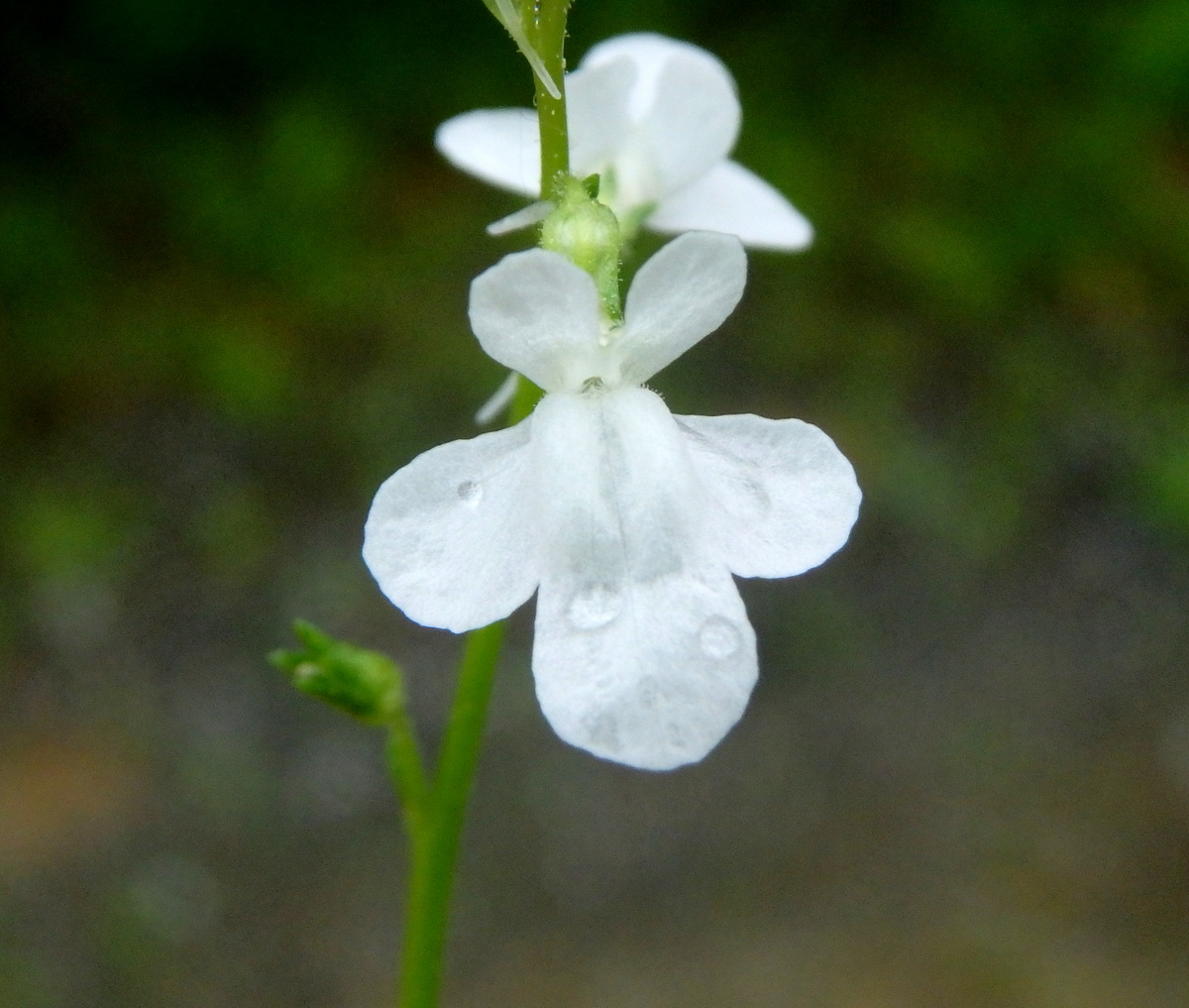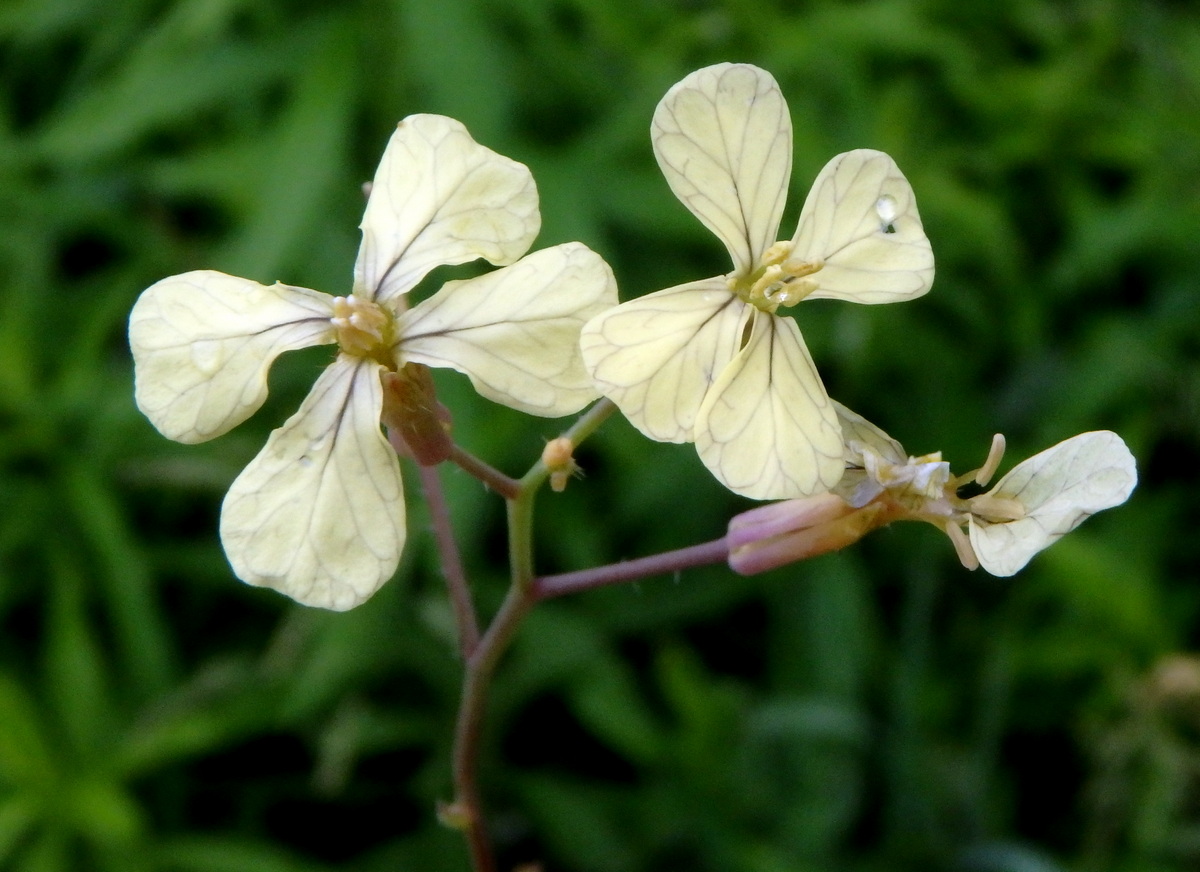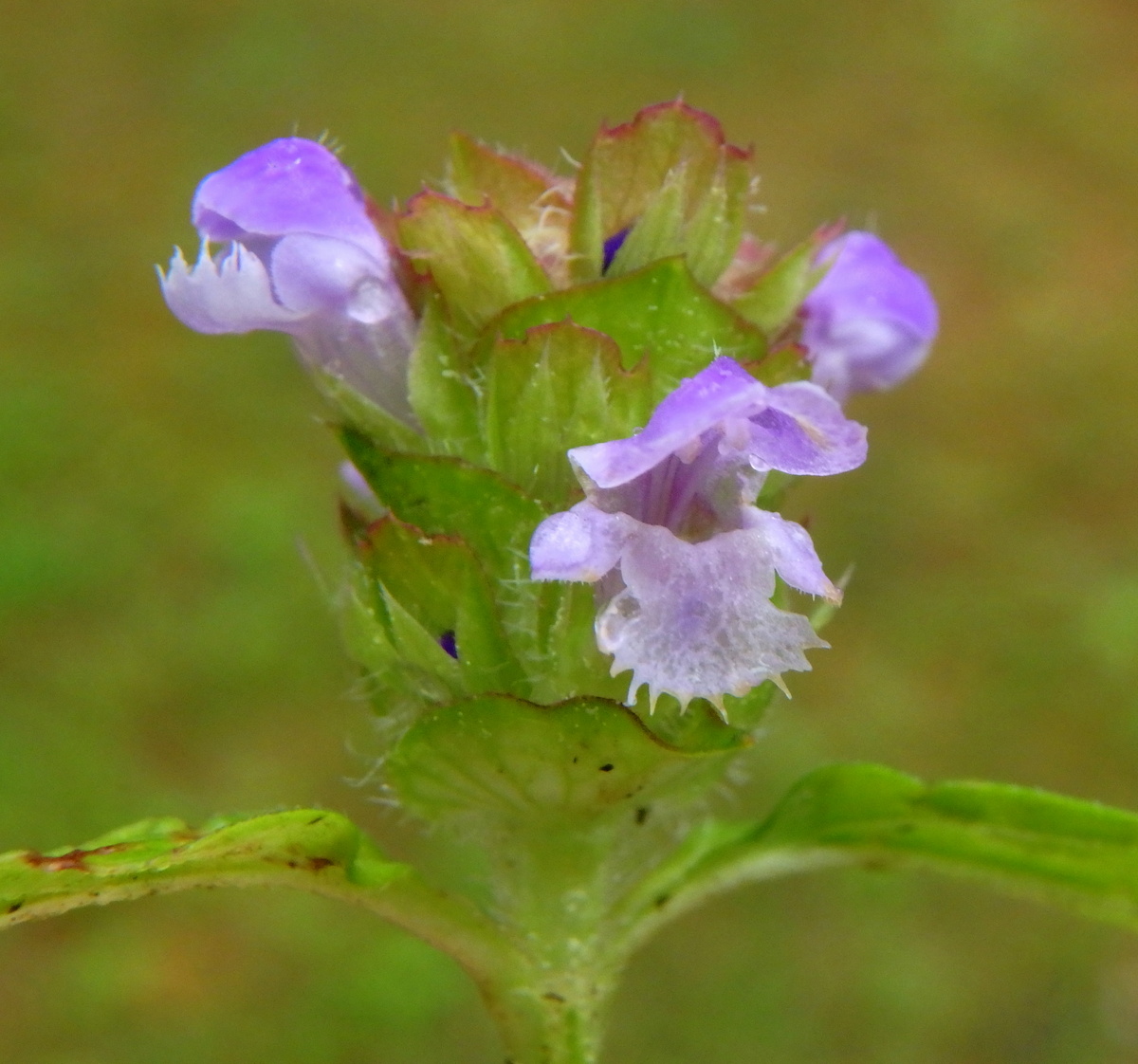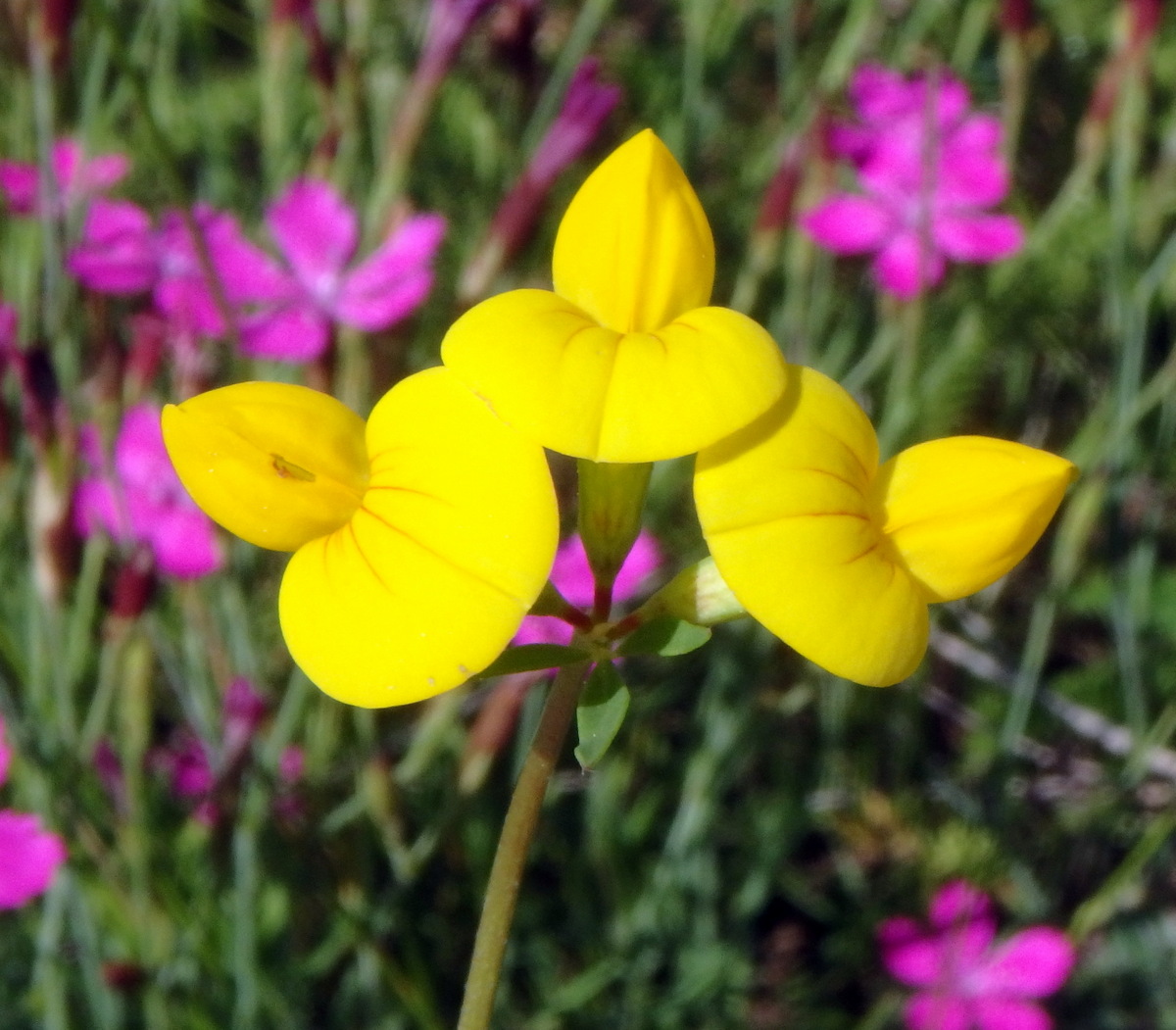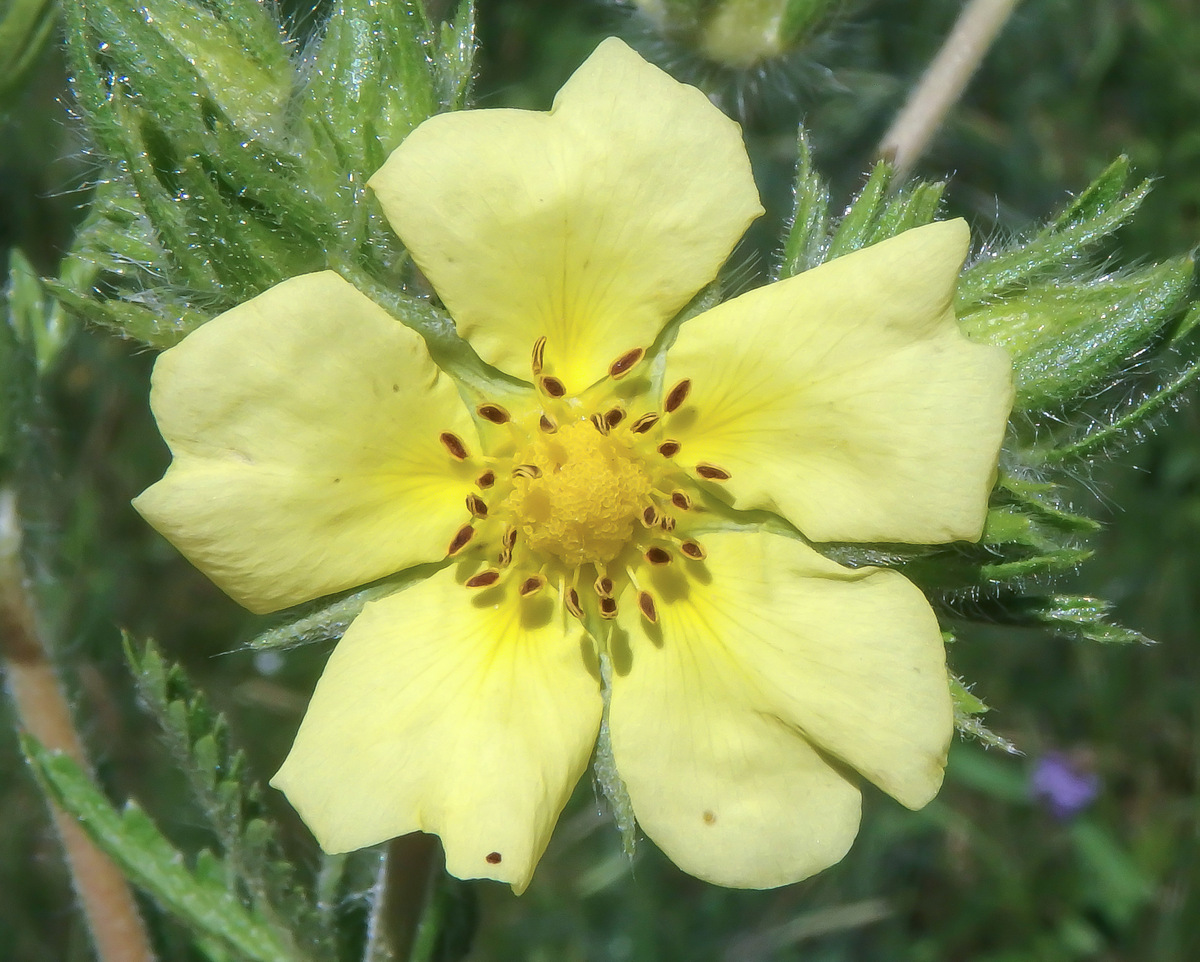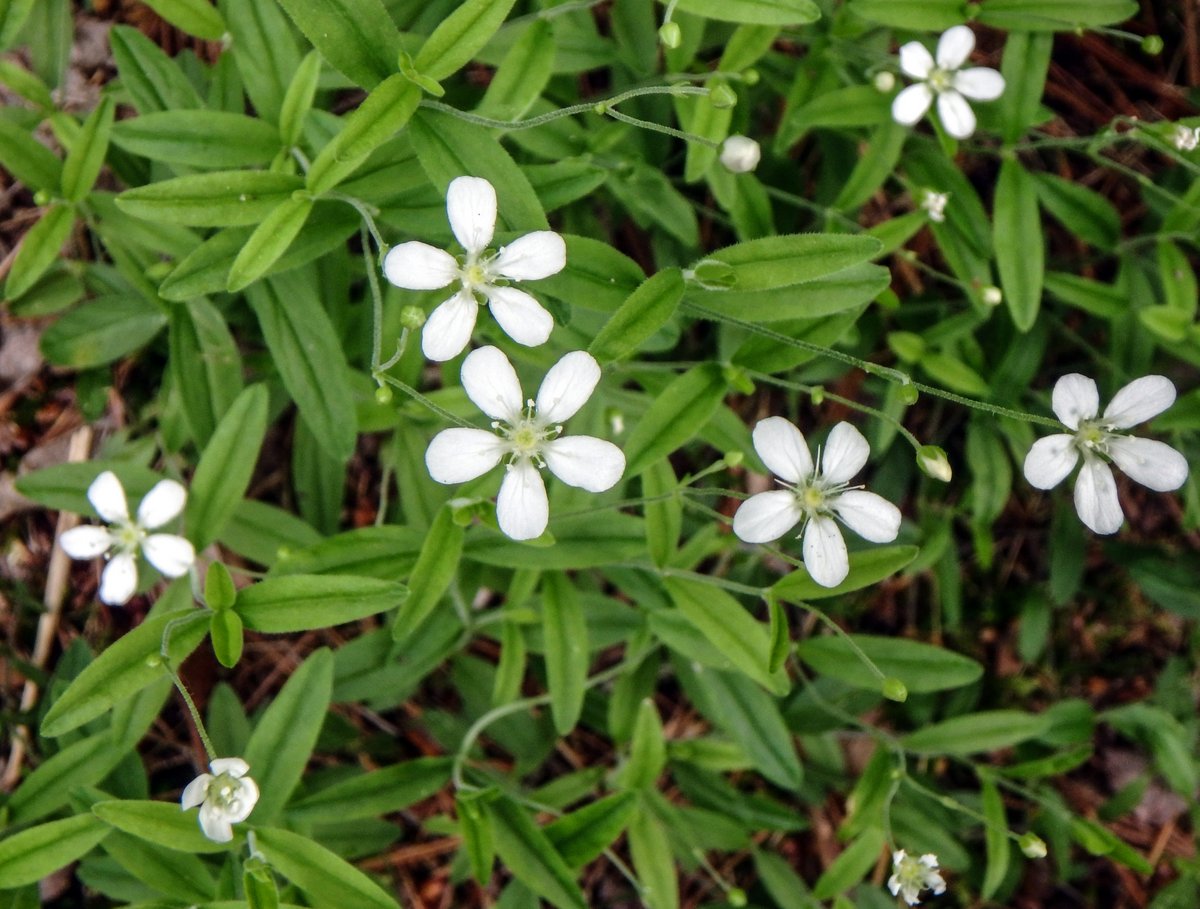
Ox-eye daisies (Leucanthemum vulgare) have just started to bloom. They were originally introduced from Europe as an ornamental in the 1800s. It quickly escaped cultivation and has now spread to each of the lower 48 states and most of Canada so in fact it is considered invasive, but nobody but cattle ranchers seem to mind. The ranchers don’t like it because the cattle don’t eat it, and that gives the daisy a chance to take over the entire pasture. That means fewer plants that the cattle do eat.

Georgia O’Keefe said “If you take a flower in your hand and really look at it, it’s your world for a moment.” Why not try it and see?

Our beautiful native black locust (Robinia pseudoacacia) trees have also just come into bloom. Each tree is filled with white, very fragrant blooms that remind me of wisteria in shape. Black locusts were prized by colonial Americans for their tough, rot resistant wood. In 1610 colonists found black locust trees planted beside Native American dwellings and thought the Natives were using the tree as an ornamental, so they decided to use it that way as well. They also used the wood for ship building, forts and fence posts while the Natives used it to make bows and blow darts. It was once said to be the toughest wood in all the world and was one of the first North American trees exported to Europe.

Blue bead lilies (Clintonia borealis) have had a disappointing showing this year. In fact I went to a large colony I know of and found that every plant was gone. Since it takes more than 12 years for new plants to produce flowers, their loss is hard to take. I’m guessing that last year’s drought and heat had something to do with it but not all plants disappeared; I found this small colony under a pine tree.

A close look at the flower shows why blue bead lily is in the lily family; each one looks like a miniature garden lily. Each flower will become a single electric blue berry, which is toxic. One Native American legend says that, when a grass snake eats a poisonous toad, it slithers in rapid circles around a shoot of blue-bead lily to transfer the poison to the plant.

Though fringe trees (Chionanthus virginicus) might seem like an exotic import from China or another Asian country but they are actually native to the east coast right here in the U.S. It’s a beautiful and fragrant tree that you rarely see anywhere, and I always wonder why it’s so under used. It is said to be tougher than dogwood, more dependable than saucer magnolia, longer-lived than cherry, and smells much better than Bradford pears.

Blue false indigo (Baptisia australis) is in full bloom now and is a plant held in high regard for its hard to find clear blue color. This is another tough native plant that bees love. People love it too, and it is now sold in nurseries. The black seed pods full of loose, rattling, seeds that follow the flowers were once used as rattles by children. Not surprisingly, other common names include rattle weed and rattle bush. Native Americans made a blue dye from this native plant that was a substitute for true indigo.

I’ll remember this year for the irises, which are blooming Like I’ve never seen. This bearded iris was big and very beautiful. On a bearded Iris a fringe or “beard” runs down the center of each of the three petals that fall or hang down.

This shot is for those who’ve never looked into an iris. They’re beautiful no matter how you look at them.

The lemon daylily (Hemerocallis lilioasphodelus) is a very old species brought to America in colonial days and originally from China and Europe. It has a wonderful spicy citrus fragrance and everyone I know who grows it has always called it the lemon lily. The Greek Hemerocallis means “beautiful for a day,” and that’s how long each flower lasts. It’s a shame that many of today’s daylilies, bred for larger and more colorful flowers, have lost their ancient fragrance.

Each strap shaped, yellow “petal” on a yellow hawkweed flower head (Hieracium caespitosum) is actually a single, complete flower. The buds, stem, and leaves of the plant are all very hairy and the rosette of oval leaves at the base of the stem often turns deep purple in winter. The Ancient Greeks believed that hawks drank the sap of this plant to keep their eyesight sharp and so they named it hierax, which means hawk.

Mountain maple trees (Acer spicatum) are flowering now but I doubt many have noticed, even though these trees flower like no other maple. All other maple trees have flowers that hang down but mountain maple’s flower clusters stand upright, above the leaves. At a glance the big leaves look much like striped maple leaves (Acer pensylvanicum) and I think that’s why many people never notice them. The shrub like tree is a good indicator of moist soil which leans toward the alkaline side of neutral. Native Americans made an infusion of the pith of the young twigs to use as eye drops to soothe eyes irritated by campfire smoke, and the large leaves were packed around apples and root crops to help preserve them.

A first for this blog is pale beardtongue (Penstemon pallidus.) This plant likes dry, sandy or rocky soil and that’s what I found it growing in. All parts, it is said, are covered with soft downy hairs. The tubular 3/4 inch long flowers are quite pretty and reminded me of small foxglove blossoms. Though native this was the first time I had seen it. It grew in a local pollinator garden.

Cow vetch (Vicia cracca) is a native of Europe and Asia that loves it here and has spread far and wide. According to the Invasive Plant Atlas of the United States the vining plant is present in every U.S. state. Cow vetch can have a taproot nearly a foot long and drops large numbers of seeds, so it is hard to eradicate. It is very similar to hairy vetch, but that plant has hairy stems. Such a lowly weed, but I like its beautiful color and it’s nice to see it sprinkled here and there among the tall grasses along roadsides.

Showy yellow goat’s beard (Tragopogon pratensis,) also known as meadow salsify, has the odd habit of closing its flowers at around noontime each day, so I can only see it on weekends and holidays. Aids in identification are how the large, 2 inch flowers follow the sun so that they are always facing it, and petals that have 5 notches on their outer edges. Also, the seed heads look like a large dandelion seed head and a white latex sap will ooze from the stems if they are broken. This plant is originally from Europe.

Another first for this blog is the Kentucky yellowwood tree (Cladrastis kentukea,) which has long, pendulous flower heads full of very beautiful fragrant white flowers. This is a southern tree and its hardiness is questionable this far north but this and 4 or 5 other trees grow near a mass of brick at the local college. Bricks in such a massive wall absorb a lot of warmth from the sun during the day and then release it slowly at night, keeping it warm enough to grow southern trees like yellowwood and sweet gum. The northernmost range of this tree is actually North Carolina, so the old landscape designer’s trick does indeed work.

Bittersweet Nightshade (Solanum dulcamara) is a climbing vine in the potato family that can grow to 10 feet long and can be seen growing on trees and shrubs. One of the more noticeable things about this plant is its unusual odor when it is bruised; it’s hard to describe but it isn’t pleasant. The plant is from Europe and Asia and is considered an invasive weed. All parts of this plant are considered toxic. Other names for bittersweet nightshade are bittersweet, bitter nightshade, blue bindweed, blue nightshade, climbing nightshade, dwale, dulcamara, European bittersweet, fellenwort, fevertwig, morel, nightshade, poisonberry, poison flower, pushion-berry, scarlet berry, skawcoo, snakeberry, tether-devil, violet-bloom, wolf grape, and woody nightshade.

I love the color of the flowers. This one seems to have one misshapen petal but that doesn’t matter; it’s still beautiful. The flowers will become bright red berries that look like miniature Roma tomatoes in the fall.

Our rhododendrons are blossoming and the eastern swallowtail butterflies couldn’t be happier.

Blackberries seem to be having a good year; they’re covered in blossoms.

Raspberries too, are doing well. I’m going to have to start walking along rail trails so I can sample them. When I was a boy I used to eat the wild berries along the railroad tracks all day long. There were very few people walking the tracks back then so the birds and I had most of the berries all to ourselves. The taste of ripe raspberries or blackberries on a hot summer day is something you never forget.

Another plant that grew along the railroad tracks when I was a boy was tradescantia, and I loved the strange triangular blue flowers they had each spring. My father also walked the railroad tracks to get to work and he saw these sprawling, ungainly plants as weeds that nobody wanted, so he wasn’t thrilled when I started digging them up and bringing them home to plant in the yard. He didn’t stop me but he did wonder why I kept dragging home those “dammed old weeds” and that is why, to this day, every time I see a tradescantia I think of him.

Apparently I wasn’t the only one taken with the unusual beauty of tradescantia flowers because now there are purple ones. When I first saw them I assumed that plant breeders had been at work on them and I just found out that is true.

And then there is this, which in my opinion is the most beautiful tradescantia blossom of all. I think even my father would have been happy to see this one. I looked online for it and I found that there are all kinds of tradescantia cultivars out there, so if you like these little flowers as much as I do you can easily have them in your own garden.
Every child is born a naturalist. His eyes are, by nature, open to the glories of the stars, the beauty of the flowers, and the mystery of life. ~Anonymous
Thanks for coming by.























